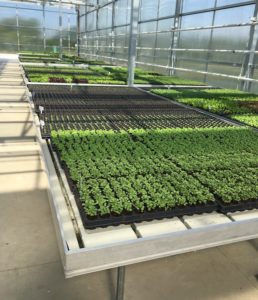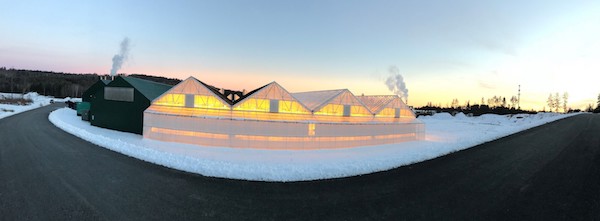
Growing Greenhouse Produce
Each year more food is grown in greenhouses than the last. The reason for this is simple — consumers want quality produce.
Food grown in controlled environment agriculture (CEA) greenhouses is protected from the wrath of Mother Nature and nurtured through each step of its life by growers utilizing intelligent controls to monitor their plants.
Farmers looking to go greenhouse can advertise their produce by focusing on its superior quality, limited transit time, year-round production, and predictable harvests schedule.
Photo Above: The popularity of leafy greens continues to grow as more consumers look for locally grown products.
CROP CATEGORIES
Typical greenhouse food crops fall into three primary categories: vine crops, berries and leafy greens. Each of these crops require different cultivation techniques and greenhouse designs that suit their unique challenges.
Vine crops are the most prevalent food in the greenhouse industry. This category includes tomatoes, cucumbers, peppers and melons. These grow vertically in the greenhouse, usually on a piece of suspended string. A 10,000-square-foot tomato greenhouse can typically hold 2,000 to 2,500 tomato vines. It is common for greenhouse vine crops to have root stocks grafted onto their fruiting vines; this increases nutrient uptake and yields.
Greenhouse berries offer an exciting opportunity for growers looking to diversify their portfolios with high value produce. Berry varieties grown in the greenhouse include strawberries, blueberries and raspberries. Because these plants have unique characteristics they are grown in different ways, forbs versus bushes. A 10,000-square-foot strawberry greenhouse will typically hold 10,000 to 20,000 strawberry plants.
Leafy greens and herbs are a quickly growing market, especially in more urban areas where localized food production is ideal. These crops grow great in the greenhouse environment, with lettuce, kale and basil being in high domestic demand.
These plants can be grown in less substrate than their berry and vine counterparts and require less greenhouse know-how to grow efficiently. A 10,000-square-foot lettuce greenhouse will hold 25,000 to 35,000 heads of lettuce.
IRRIGATION METHODS
The most widely used irrigation technique in CEA greenhouses is drip irrigation. Drip irrigation systems offer water efficiency, precision flowrate control and easy maintenance. These drip lines use pressure compensated emitters that irrigate plants evenly. You’ll find drip irrigation used primarily in gutter, Dutch bucket, bench and raised bed greenhouses.

Another method for delivering water throughout the greenhouse are overhead systems using sprayers or booms to distribute water throughout the plant canopy.
More popular with bedding plants, overhead irrigation is easier to design, and the same configuration can be used for multiple plant set-ups. You’ll find spray systems for crops being grown on the ground or benches.
Ebb and flood systems irrigate by filling a container with water for a sustained period, and then draining it away. Water rises throughout the plant’s medium through capillary action and sufficiently fills all voids. Benches and flood floors are popular for this technique. One perk of ebb and flood systems is that plants can be added and removed from a bench without impacting the irrigation system.
Arguably the most effective form of watering in the greenhouse nutrient film technique, NFT, irrigated by providing a continuous thin layer of water to the plant’s roots. These crops benefit from high oxygen levels in the root zone but are more susceptible if water stops. NFT uses troughs or pipes to hold the plants and water stream.
Deep Water Culture is an ancient form of hydroponics with origins in rice. Plants are placed on floating rafts with their roots in a large pond of fertigated water. The pond must have oxygen added to it perpetually constantly to prevent root suffocation.

Mother Nature.
CONSULT AN EXPERT BEFORE YOU START
How can we make our greenhouses more efficient, sustainable and economical? As a systems engineer, these are the questions I face every day. It is important to understand that not every plant, location and grower is the same, and each require tailored cultivation systems to be successful.
It is critical for these engineers to have a combination of horticulture and environmental engineering and create relationships with the growers to better understand their unique concerns.
By doing this you can integrate economic, environmental and social sustainability into every greenhouse to ensure its vitality for generations.


 Video Library
Video Library 




















